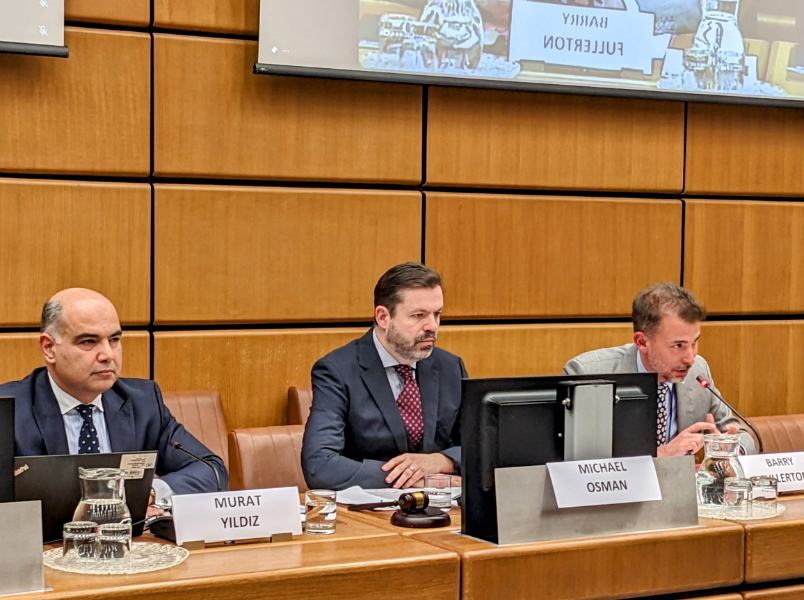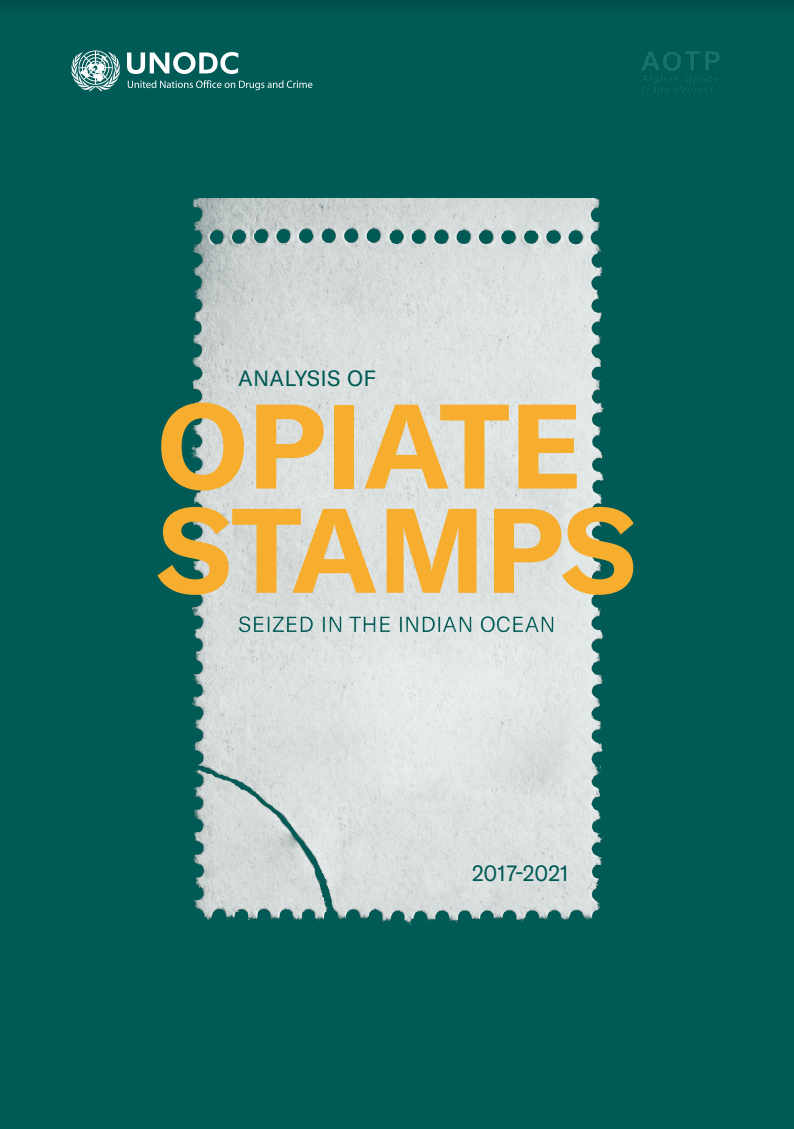
 |
XX |
7 March 2023 - The Afghan Opiate Trade Project (AOTP), under the framework of the Global Programme Criminal Network Disruption, United Nations Office on Drugs and Crime (UNODC) launched its new study on “Analysis of opiate stamps seized in the Indian Ocean 2017-2021”. The analysis provides a unique insight into stamping practice of Afghan opiate seized in the Indian Ocean.
Production and trafficking of Afghan opiates continue to be a serious threat to public health, good governance, and security at national, regional and global level. Afghan opiates are trafficked to almost every continent in the world and are a major source of revenue for organized criminal groups. The immense profit generated from this illicit trade funds other criminal activities and paves the way for development of criminal enterprises around the world.
The income from opiates in Afghanistan estimated to be around USD 1.8-2.7 billion, while much larger revenue is generated by international Drug Trafficking Organizations (DTOs) along the supply chains outside Afghanistan. Although the majority of opiates are trafficked from Afghanistan by land, a proportion of opiates produced in South-West Asia is also trafficked by maritime methods to global destinations.
Sustained interdictions by national authorities and international maritime coalitions, including the Combined Maritime Forces (CMF) and the EU Naval Force-Somalia (EUNAVFOR), have resulted in increased seizures of opiates (and methamphetamine) in the Indian Ocean. Drug packages are marked with a wide range of stamps and signs including hand-pressed and hand-written markings. These stamps are usually made up of several elements of sequential and non-sequential numbers, names, locations, depiction of animals and other objects.
If fully understood and discovered, stamps and markings can potentially provide valuable information about manufacturers, DTOs, production year and destinations as well as trafficking routes. The current analytical study aims at filling the knowledge gap, inform policies and practices to address the illicit opiate trafficking and support criminal justice agencies working to disrupt the supply chains around the world.
The research is based on the examination of 87 cases of heroin bags that carry various markings and covers an overall 32 seizures made in the Indian Ocean in 2017-2021. It is supplemented by interviews of nine drug traffickers (key informants) from Afghanistan who provided their views and opinions on various hand-pressed and printed stamps exhibited in the report.
In her remarks, Kaitlin Meredith, Coordinator for the Global Programme on Criminal Network Disruption, noted “Collecting qualitative information from hard-to-reach sample groups such as those involved in the opiate trade in Afghanistan and elsewhere is one of the unique niches of the Afghan Opiate Trade Project.”
According to the study, stamps are chosen by individual DTOs which appear to be well known amongst DTOs. Usually, stamps cannot be copied by other traffickers. However, in some cases a “franchising” is possible, with smaller traffickers purchasing the right to use stamps associated with larger DTOs. Dates printed on heroin packages generally indicate the production year. Sequential (e.g., 555 and 777) and non-sequential numbers (e.g., 355 and 787) stamped on heroin packages are generally seen as being coded communications between heroin manufacturers and traffickers, although the specific messages are not known. Words stamped on heroin packages appear to be an indicator of where the heroin was produced. Heroin produced in southern Afghanistan is reportedly stamped with Pashto words, while heroin produced in northern Afghanistan and the Islamic Republic of Iran is more likely to be stamped with Farsi words.
According to Michael Osman, Head of AOTP, “Analysis of drug stamps goes some way to identifying the trafficking routes and reach of criminal networks manufacturing heroin in Afghanistan”.
 |
XX |
The study contributes to understanding of modus operandi of DTOs involved in manufacturing, production, and trafficking of opiates. It also points to the need for further analysis of drug stamps seized in other locations and developing a database of different markings of heroin stamps to support such analysis.
Analysis of Opiate Stamps seized in the Indian Ocean is available online at this link. It was funded by the United States State Department's Bureau of International Narcotics and Enforcement Affairs (INL) and contributes to broader international efforts to provide member states with the data and resources they need to achieve the Sustainable Development Goals by 2030, specifically SDG 16: “Promote peaceful and inclusive societies for sustainable development, provide access to justice for all and build effective, accountable and inclusive institutions at all levels”.
The study is also in line with the recommendations made at the Thirtieth Special Session of the United Nations General Assembly in 2016.
Further information:
The Afghan Opiate Trade Project aims to address the need for systematic, comprehensive, and consolidated analytical information about trends in the global illicit Afghan opiate trade in order to support the international response to that issue. In addition to this, the project also aims to enhance the drug research capacity of those countries most affected by Afghan opiates and increase the awareness of the data and information needs to support research on the opiate trade. The AOTP has produced a number of research reports relating to aspects of the illicit trade in Afghan opiates, and has also supported a number of countries in producing their own reports.
Participants at the launching event for UNODC’s study on “Analysis of opiate stamps seized in the Indian Ocean 2017-2021” included representatives from the Permanent Missions, US State Department, Bureau of International Narcotics and Law Enforcement Affairs (INL), US Drug Enforcement Agency (DEA), George C. Marshall European Center For Security Studies, European Border and Coast Guard Agency FRONTEX, EUROPOL, INTERPOL, Organization for Security and Co-operation in Europe (OSCE), Combined Maritime Forces, EU Naval Forces Somalia, UNODC Regional Office for Eastern Africa, Container Control Programme, and Global Maritime Crime Programme, along with the Global Initiative against Transnational Organized Crime (GI-TOC).
For more information, please visit:
- Bureau of International Narcotics and Law Enforcement Affairs (INL)
- UNODC’s Afghan Opiate Trade Project
